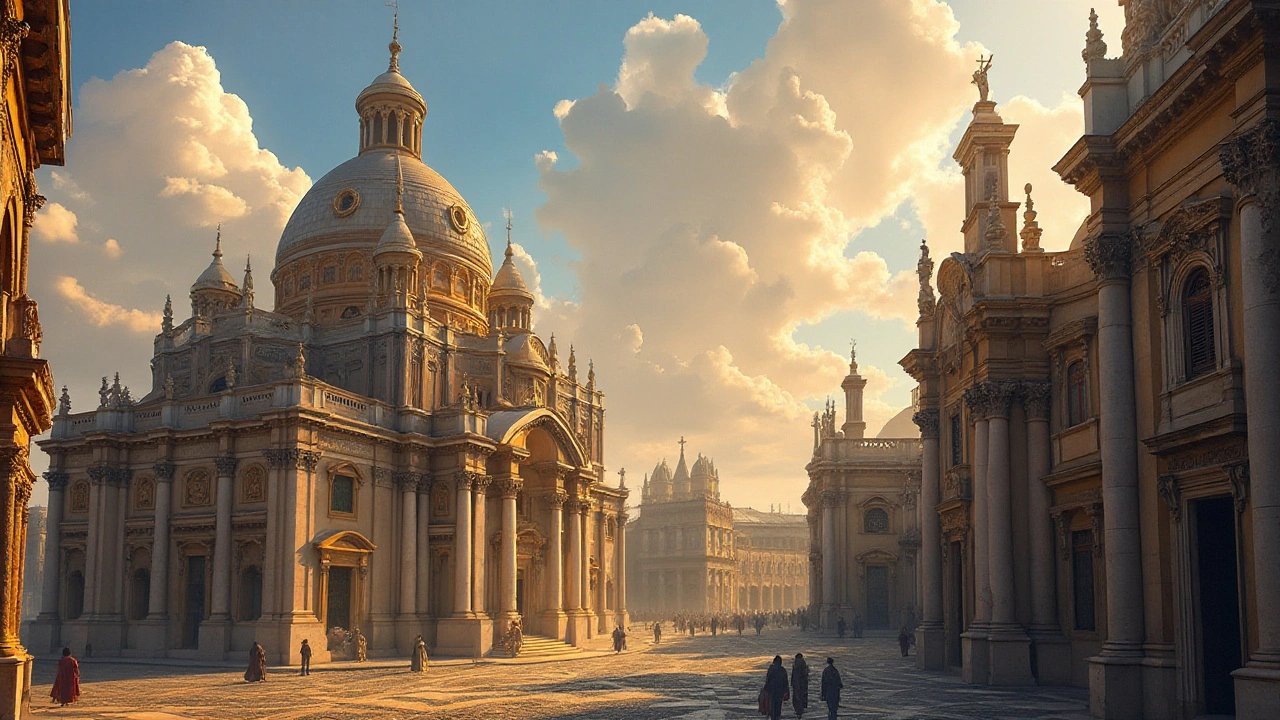Ornate design — spotting the styles that pack a punch
Love rooms that feel rich and detailed? Ornate design is all about bold shapes, layered decoration, and storytelling through surfaces. You’ll see heavy moldings, carved wood, gilding, stained glass, mosaics, and dramatic arches. These details show up in Baroque palaces, Rococo salons, Beaux-Arts town halls, Gothic Revival churches, and Byzantine domes.
If you want quick examples to study, check out baroque flourishes in grand staircases, the playful scrollwork of Rococo mirrors, and the symmetry and decorative sculpture in Beaux-Arts facades. Historic posts on Macklowe Art & Architecture go deep on these styles — from Baroque’s dramatic contrasts to Art Nouveau’s flowing ornament.
How to tell ornate design apart from simple styles
Start with silhouette. Ornate pieces have complex outlines: broken pediments, scalloped edges, and layered cornices. Next, look at surface treatment: are surfaces carved, painted, or inlaid with pattern? Materials matter too — marble veining, carved wood, gilt leaf, colorful mosaics, and patterned tiles are all clues.
Pay attention to scale. Ornate design often uses large gestures — oversized chandeliers, grand columns, big domes or richly framed windows. Movement is another sign: flowing lines (Art Nouveau), twisting columns (Baroque), and clustered ornament (Beaux-Arts) all create a sense of motion and visual drama.
Use and care: practical tips for living with ornate design
Want ornate elements without feeling overwhelmed? Pick one focal area: a fireplace surround, an entry hall, or a single decorated ceiling. Keep surrounding surfaces simple and neutral so the detail can breathe. For example, match a carved mantle with plain walls and modern furniture that echoes the mantle’s color or texture.
Mixing old and new works if you balance scale. Pair a Rococo mirror with a minimalist console, or place a Gothic stained-glass panel above a clean-lined sofa. Let one element anchor the room; don’t try to repeat heavy ornament everywhere.
Maintenance is practical, not mystical. Dust carved surfaces with a soft brush, avoid harsh cleaners on gilding or painted finishes, and test gentle soap on a hidden spot before cleaning. For structural issues in historic ornament — cracked plaster, loose molding, damaged mosaic — consult a conservator or a contractor who understands traditional materials. Posts on preservation and restoration techniques on our site offer step-by-step approaches for Beaux-Arts and other ornate buildings.
Want to learn more? Read our deep dives on Baroque, Rococo, Byzantine, Gothic Revival, Beaux-Arts, and Renaissance Revival to see real examples and restoration stories. Ornate design rewards a closer look — once you know what to watch for, those details will start telling clear, useful stories about space, purpose, and history.

Exploring the Majestic Charm of Baroque Architecture
Baroque architecture, a hallmark of the 17th century, is characterized by its grandeur, drama, and intricate details. Known for its ornate facades and grandiose spaces, this style first flourished in Italy before spreading across Europe. With its emphasis on bold forms and lavish ornamentation, Baroque architecture reflects both religious fervor and the burgeoning artistic creativity of its time. This article delves into the defining features of Baroque architecture, its historical significance, and its lasting impact on design.
Read more